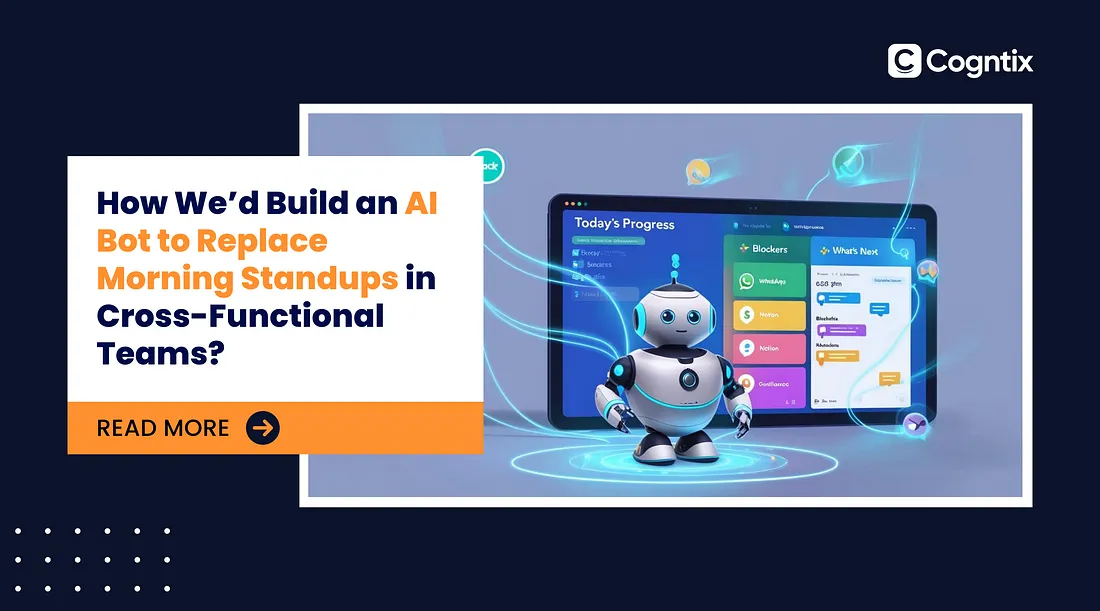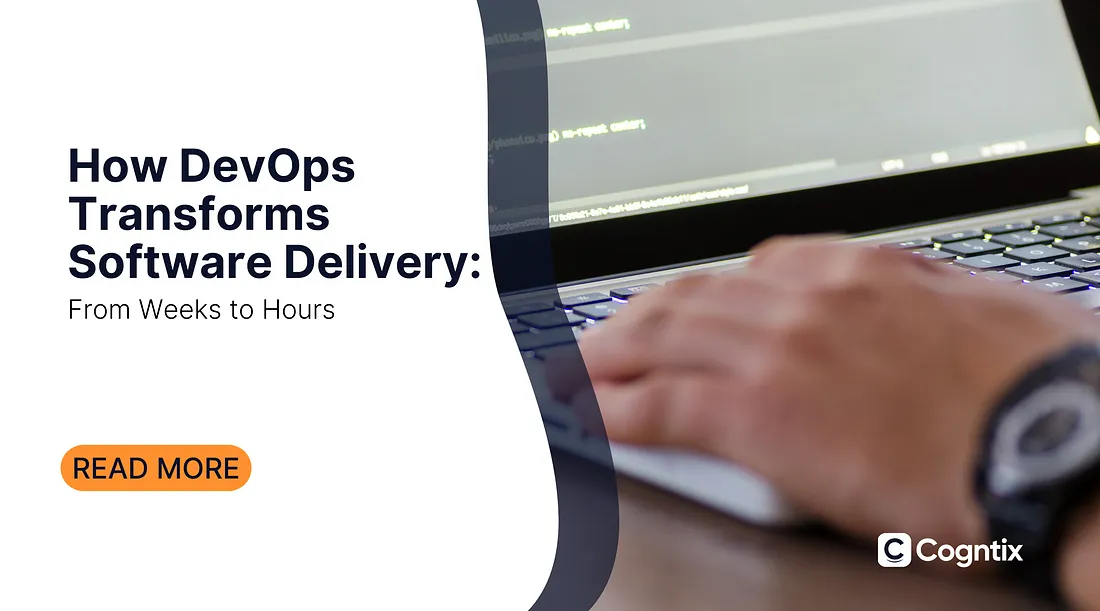You’ve probably seen it. The 9:30 AM shuffle. Developers mute themselves. Designers multitask. PMs read bullet points like a script. Somewhere between “I fixed that bug” and “blocked by the API,” we all pretend this ritual is still useful.
At Cogntix, we started asking a blunt question:
What if the daily standup didn’t require humans to show up, but still gave humans the clarity they needed to move?
We didn’t want a Slack bot that just asked “What did you do yesterday?” We wanted to simulate the rhythm of a real standup—updates, context, blockers, team awareness—without the calendar drain.
Here’s how we would build it!
Step 1: Capturing Updates Without the Noise
We knew the biggest hurdle wasn’t AI, it was people not wanting to open a dashboard at 9 AM. Some team members are mid-sprint. Some are still having coffee. Some prefer talking to typing. So instead of forcing a format, we made the system flexible.
If someone wanted to speak, they could record a quick voice update directly inside Slack or WhatsApp.
We used existing integrations and funneled voice clips into our backend using background services that tagged each message with speaker identity and project context.
Text updates? Those worked too. In fact, if someone typed “Just closed PR #456, QA pending,”.
We ran it through a language model that extracted keywords and detected intent behind the update.
To make this work globally.
We added time zone-aware scheduling logic. Users in Sri Lanka didn’t get nudged at 2 AM. Each team member got an auto-prompt via chatbot when their workday started.
What came in wasn’t just dumped into logs, we parsed it in real-time to figure out:
What got done
What didn’t
Where blockers were
Who the blocker was tagged to
Step 2: Summarizing Like a Teammate, Not a Bot
Most bots fail here. They either summarize too much or too little. We didn’t want another “5 updates received” email. We wanted summaries that felt like they were written by someone who worked with the team.
So we fine-tuned the generation logic based on role. For devs, it emphasized PRs, branches, blockers. For QA, it picked up passed/failed tickets. For PMs, it prioritized timelines and decision risks.
We tested how summaries looked when 5 different departments submitted updates in one go. The model needed to keep structure, who said what, when, and what needs action.
The output was readable, clickable, and tagged by project, date, and team. Each summary came with context buttons like “View yesterday’s version” or “Flag blocker.”
Step 3: Surfacing the Right Things to the Right People
Information is useless if no one reads it. So we added a signaler logic, a layer that quietly pings relevant people without blasting everyone.
If someone said:
“I’m blocked by Sarah on UX, need wireframes to proceed.”
Sarah would get a Slack ping with just that sentence and a deadline tag. No digging through update threads.
Urgency-based flags were baked in.
Red meant action needed.
Yellow was “check on this.”
Green? All good.
It gave teams a heatmap of attention without digging through noise.
Step 4: A Dashboard That Works Like a Daily Pulse
This wasn’t a reporting tool. It was a heartbeat. You opened it, and you knew how your project was doing today.
We built collapsible panels, by team, by person, by project. The moment you clicked “Design Team,” you saw:
Who checked in
Who’s blocked
What tasks moved
What still needs follow-up
We also added historical scroll backs and one-click export for managers who wanted summaries dumped into Notion or Confluence.
And yes, we made it minimal. Because no one needs bar charts on a Monday morning unless they ask for it.
Step 5: Trust, Privacy, and Team Boundaries
This wasn’t just a cool internal tool, it needed trust.
Every update was encrypted end-to-end. Role-based visibility meant engineers didn’t see marketing stuff unless they were tagged. Managers could see everything, but team members saw only what was relevant.
When updates age fast, we put a 60-day auto-delete policy in place. You don’t need a record of what your QA said last quarter.
Why Teams Actually Liked It?
We didn’t just replace standups, we removed the social friction that comes with them.
In traditional setups, standups are performative. People feel pressure to sound “productive,” even when they’re stuck. Add time zone misalignment, unpredictable workloads, or just the chaos of a Monday morning, and suddenly, the daily sync becomes a bottleneck, not a boost.
Our system changed that.
No more time zone headaches
No more Slack threads lost in chat noise
No more “wait, who was blocked yesterday?”
Everyone stayed informed, aligned, and a little less stressed. The team could work without worrying about status meetings, and still get the full picture.
This AI bot wasn’t built for vanity.
It was built because we were tired of wasting 30 minutes on calls that only delivered 3 minutes of actual updates.
It worked better because it was simple, integrated with what teams already use (Slack, Teams, WhatsApp) and smart enough to know when to shut up and when to shout.
We didn’t just use AI because it’s trending. We used it because it solved something that hurts almost every fast-moving team: wasted mornings.
If your team still runs on rituals instead of relevance, let’s build something better together. At Cogntix we don’t build dashboards. We build clarity.
Written by: Gayathri Priya Krishnaram (Digital Content Writer at Cogntix)




